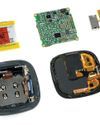
THE TERM 'BIOMETRICS' SOUNDS LIKE A FUTURISTIC TECHNOLOGY USED among spies and saboteurs on the big screen. However, it's far from science fiction, and much more common than you might think. The word biometrics merely relates to the measurement of the biological or physical qualities that are unique to a person.
Those measurements can then be used to compare two samples, such as an image of a face, and determine whether the two are a match.
Humans have long used individual physical characteristics as a method of identification. Around 29 000 BCE, cavemen used thumbprints to claim ownership of their cave drawings, and Babylonian businessmen used fingerprints as seals on contracts in 1913 BCE, though it wasn't until the 1700s in Germany that fingerprints' unique identifiable features were first discovered.
Over time, early these biometrics have developed into more complex methods of analysis, such as digital fingerprinting, facial recognition and voice authentication.
Digit age
Since ditching the ink in the 1970s, fingerprint biometrics have become commonplace for identification, especially in smartphone security. The first modern-day scanners were developed by the Federal Bureau of Investigation (FBI) and used light to take a digital picture of a fingerprint and convert the curves and ridges into binary code, which is formed of ones and zeros. This unique binary code could then be associated with an individual.
Over time, this technology has evolved into capacitive fingerprint scanners that use touchscreen technology to create a digital fingerprint using electrical sensors. Beneath the screen of your smartphone or tablet are tiny electricity-storing capacitors that create a grid of tiny contact points. When a finger is placed over the map, fingerprint ridges trigger the sensors and create an identifiable pattern.
This story is from the June 2023 edition of Tech Magazine ZA.
Start your 7-day Magzter GOLD free trial to access thousands of curated premium stories, and 8,500+ magazines and newspapers.
Already a subscriber ? Sign In
This story is from the June 2023 edition of Tech Magazine ZA.
Start your 7-day Magzter GOLD free trial to access thousands of curated premium stories, and 8,500+ magazines and newspapers.
Already a subscriber? Sign In

DIVING INTO A STORY
Navigate two worlds as a young girl named Izzy who dreams of being a writer.

FITBIT SENSE TEARDOWN
Learn about the health-tracking technology in this smart watch.

SOUND EFFECTS
The smallest model in Sennheiser’s soundbar range to date offers massive sound in spite of its mini size.

VIBRANT UPGRADE
Changes have been made to the original Steam Deck in all the right places.

THE BEST ACTION CAMERA YET
GoPro has refined the best action camera on the market, making it better for beginners and pros alike.

DOWNL TO THE WIRE: THE SHIP FIXING OUR INTERNET
Africa's connection to the World Wide Web depends on cords of hair-thin fibres that rope along the ocean floor. Sometimes they break. Jess Auerbach Jahajeeah joined the crew of the Léon Thévenin, one of only a select few ships that are able to fix them

ALL THE rAGE
E-sports and gaming once again took centre stage in Johannesburg.

META NARRATIVE
How might gaming level up from Zuckerberg's photorealistic VRChat?

INSIDE A PINBALL MACHINE
Plunge into the engineering of a popular arcade classic.

MOBILE GAMES
What's the point of a game that plays itself?